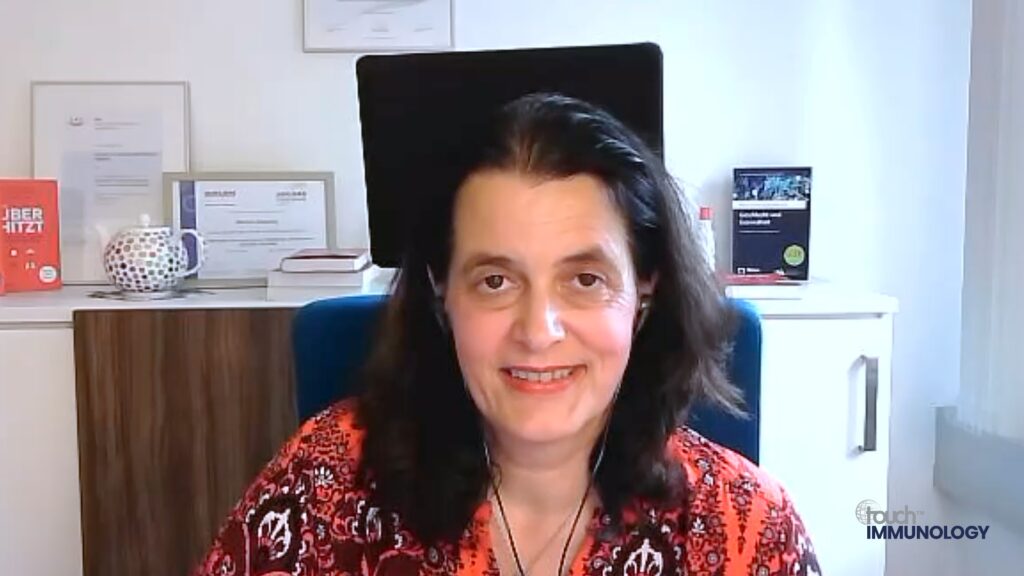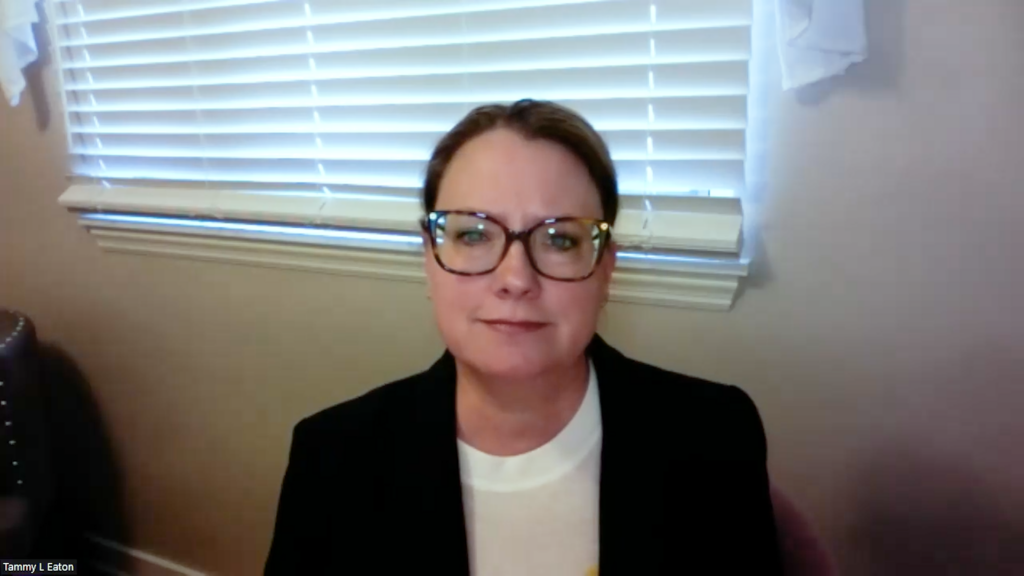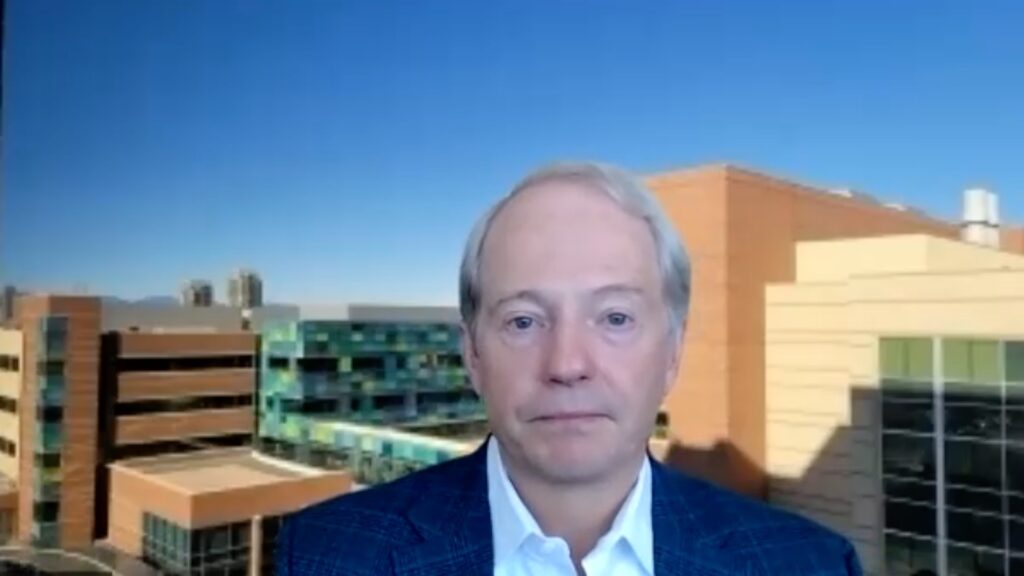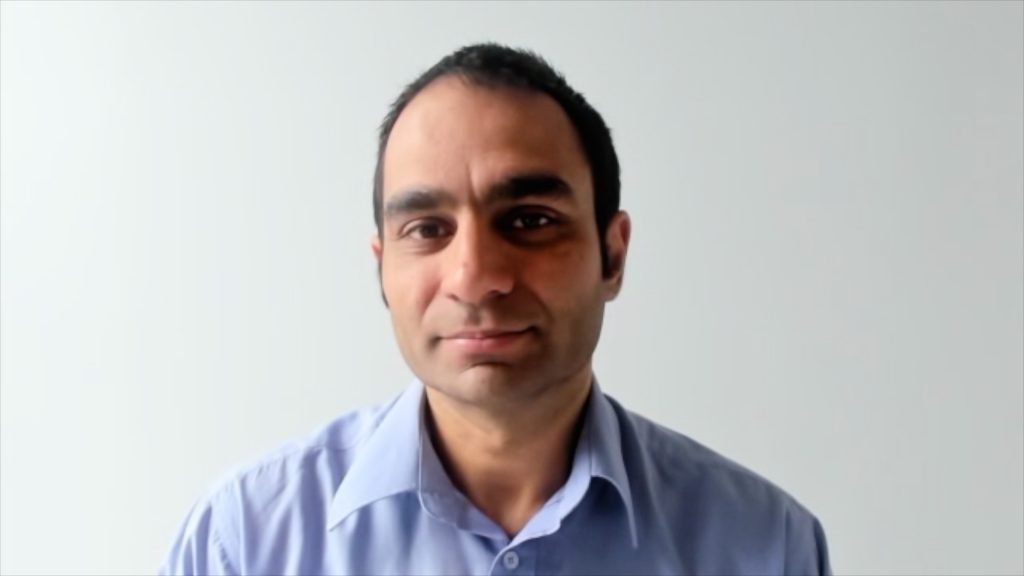Visionary Voices: Season 2, Episode 2
In this episode, Prof. Irene Higginson, OBE, Director of Better Health and Care Futures at King’s College London, discusses the complex challenges of managing breathlessness. She explores non-pharmacological strategies, the value of multidisciplinary care, and how the Breathlessness Support Services at KCL are transforming patient support. Tune in for expert insights and a look at future directions in breathlessness research and care.
Resources for breathlessness self-management:
- Fact sheet: Managing breathlessness
- Fact sheet: Hand-held fan
- Fact sheet: Positional techniques
- Fact sheet: Distraction techniques
- Fact sheet: Sleep hygiene
- Resource: Breathlessness poem
- E-BREATHE
- NHS England module on managing chronic breathlessness
Information about SELF-BREATHE:
Transcript: [Nicky]: Hello, and welcome back to Vision Voices. It’s Nicky here, and I can’t believe we’re recording season two already. But we have plenty of exciting guests joining us over the next few months that Gina and I can’t wait to share. In the last episode, Gina welcomed the inspirational professor Dedee Morell to talk about her fascinating career story. And today, I welcome another inspiring leader who has made a huge impact in her field. I caught up with the wonderful professor Irene Higginson from the Cicely Saunders Institute at King’s College London to talk about nonpharmacological strategies for managing breathlessness. We discuss the practical tools available for patients, and professor Higginson shares insights into the breathlessness support service initiative at King’s and how they are using an MDT approach to care. Hi, Irene, and welcome to Visionary Voices. Prof. Higginson: Thank you very much for inviting me. Nicky: It’s a pleasure to have you. So today we’re talking about breathlessness, which is obviously a very distressing symptom that patients have, and also the people who are caring for them, it’s a very distressing situation for them as well. Could you tell us a little bit about the management of breathlessness and what the challenges are? Prof. Higginson: Well, first of all, breathlessness is very common, and it affects lots of people with different diseases, often respiratory diseases, but it can also affect people with heart disease or with neurological diseases. And it’s very distressing, and it’s difficult to manage. Partly because you can, first of all, do a lot of things, and there’s a lot of work now that’s been done to try and manage the underlying disease, be it the lung disease or the heart disease or whatever. But beyond that, breathlessness is a very frightening symptom for many people. And for their families close to them. It often comes in episodes, in waves. It can take you unexpectedly. It can limit what people can do. So for those reasons, it’s really important as doctors or nurses or physiotherapists we learn to manage breathlessness better. Nicky: Absolutely. I read somewhere recently that around, I think there was a few stats, but between sort of twenty percent and thirty percent of people attending a and e or the emergency room are there for breathlessness. Prof. Higginson: Yes. That’s right. I mean, we reckon that probably in the UK, about two million people experience breathlessness at any one time, and that’s quite severe breathlessness. There are many more who experience a more mild breathlessness, and it’s a frequent cause of emergency department attendance. And so, if you look at ambulances, about one in five ambulances has got somebody in with breathlessness for one reason or another. Nicky: Sure. And, I know breathlessness itself is, you know, it’s debilitating, isn’t it, in the moment for the person? What other impacts does it have on a patient’s life who suffers from these episodes? Prof. Higginson: So when breathlessness starts in the more mild stages, it still has a lot of impact on people’s lives because people become more isolated. So they can do less. In the early stages, people told us, for example, they’d go out and they couldn’t dance. Breathlessness also affects somebody’s ability to talk, and it affects their ability then to engage socially with others, to walk, to go for walks, to do things, to do things at home, including housework and gardening and hobbies that people might have. That’s in the more mild forms. But that becomes quite socially isolating for people. So for that reason, we’ve called it almost an invisible symptom because it becomes invisible. Then when breathlessness gets more severe, it has more severe impacts. First of all, people start to do often less and less, and they enter what’s often called the cycle of disability in that you do less, so your muscles get more weak. And the problem with weaker muscles is that your breathlessness gets worse. Because one of the things I I want you to know is that fit muscles actually use oxygen more efficiently. So if you have fit muscles, then actually you can manage with slightly less oxygen going to your lungs. So even if you’ve got diseased lungs, that’s helpful for you. So we’ve learned treatment strategies for that. But the problem with the cycle of disability is that what happens is that people start to do less, their muscles get less fit, and that means that they get more breathless, so then they do even less, and that continues. Nicky: Yeah. It’s a difficult cycle, isn’t it? Prof. Higginson: And then it has an impact on their family members. First of all, because the family members have to start doing things that the other person can’t do. But also, it’s very frightening for everybody. If you get a severe episode of breathlessness, it can be quite a terrifying feeling. If you want to know the panic that you get through breathlessness, you could try breathing through a straw. Nicky: Okay. Prof. Higginson: And just try breathing in and out through a straw, and that will make you feel in the way that people get breathless. Nicky: I will definitely try that to see how hard it is. And, obviously, this has a huge impact on the quality of life of patients. But I know that you and and your colleagues at King’s are very keen on raising awareness on the non pharmacological ways of managing breathlessness. And is that the first line of of treatment that you recommend for the patients? Prof. Higginson: So you’re right that you want to treat as much as possible the underlying illness, but there comes a time when you probably can’t do that much more for the underlying illness. Although, there are some new medicines being developed across lots of diseases that hold that back. Even if you are treating the underlying illness, you still want to treat the breathlessness as much as possible because even then, you can give people a good quality of life. There aren’t many medicines that work really well to just manage the symptom of breathlessness. But actually, the good news is that there are nonmedicines, non drugs that actually do help. And in those things, we try and target the lung and how people are breathing, the lung to the brain and how people are thinking about things, the functions of the body, so how much you do and how you use your muscles in particular, and then how you’re feeling and what aids and practical things you’ve got in place. So it really needs a multidisciplinary approach. And there are a few simple tools that help as well. Nicky: Okay. Great. Could you tell us a little bit about the tools that are available? Prof. Higginson: So one of the things that we’ve started to look at is how to help people with their breathlessness. And a very simple tool is this, which is a handheld fan, if you can see it alright. And the key with a handheld fan or something similar is to blow air on this part of the face. And if you can see where I’m pointing, you might or might not be able to see on the pictures, but it’s generally around the nose. This part of the face, around the nose and immediately to the side just under the eyes, is linked to a part of the brain that manages the sensation of breathlessness. It’s actually an old fashioned dive reflex that you have when you’re born actually, and that all people have. And that lessens the feeling of breathlessness. And the way the fan works is by cooling this part of the face around the nose and on the cheeks. So the power of it is that cooling. If you don’t like a handheld fan blowing cool air there, you can actually just cool it with, a flannel or even a water spray. And some people combine both, so they put cold water on this part of the face and then use a fan, which actually cools it even more. And the advantage of this is people can carry this around. It’s only very small handheld fan. Most of them are little. Get one that does actually blow air forwards, not really one of the very cheap ones. But you can carry it around with you in your pocket. And if you if you get breathless, then you can stop and use it, and it can help with a crisis of breathlessness. Okay. The second simple thing is learning techniques. And that’s not only breathing techniques, but also positions to get in and how to plan and walk. So, breathing techniques are often involved in thinking about breathing out more than breathing in and using the diaphragm to breathe. The lungs are elastic. So if you breathe out and then relax, they will naturally want to fill up, but most people are busy breathing in. And a key is to drop the shoulders. So we developed a little thing which some patients call a poem or a little mantra, which basically said, you know, breathe out and drop the shoulders and sigh and feel that. And it also helps calm you down and then relax and let the air come in. So if you, practice that mnemonic and you can download it from our website, you can actually practice this. And we’ve had many people who put it up in their houses or carry it with them so they learn it and look at it when they get short of breath. Nicky: Amazing. They’re all very, accessible strategies to help people. And I’ll include a link to the the toolkit below this podcast and so people can access them. Prof. Higginson: Yeah. Yeah. They’re free to use, and we’re very keen for people to use them, adapt them, develop them as they wish. Another simple technique is the positions to get in when you are breathless. So there are certain positions, you can do it when you’re standing or sitting, but it often involves leaning forward because that puts the lung in a better position. So you can lean forward on pillows or on a desk. If you’re standing or if you’re going upstairs, you can lean against the banister. But a kind of position of leaning forward against those, and in the, scripts that we’ve got, we’ve got little pictures of those things that show you what to get into. And then there’s something called pacing. Pacing is really actually very important. And there’s research that’s been done that shows that if people make a pace, pace themselves on a plan, they will walk further. So a key is that instead of thinking, I’m gonna climb that flight of stairs no matter what, and setting off, you make a plan that you’re gonna go halfway up and take a pause and a break, and then you’re gonna go the next bit and the next bit. And you never get to the point where you’re really badly breathless Okay. But you just do small amounts. And then there’s practical walking aids and other aids. And these are very important, actually, because, actually, we found that if people use a walking aid, there’s something called a rollator, which actually is very helpful because it puts the lung in a good position, but you can use it to walk along. They’re all they often got three wheels or four wheels. They’re now quite trendy. They’ve got brakes and shock baskets and all sorts of things on them. So they look quite nice, but somebody who’s got one with a big logo on the front called drive.. Those sort of, aspects like a rollator, some kind, three wheels, four wheels, they often fold up and fit in the house, in the corner, or in a car or whatever. If you use those, they’re actually quite helpful for helping you do more and get a ban. And the aim of this is to break that cycle of disability that people get into. And importantly then, and really importantly, they’re strengthening the muscles. So often for people with respiratory disease, we try and encourage them to do something called respiratory, physiotherapy or, pulmonary rehabilitation. The point about pulmonary rehabilitation, and you think, how can somebody with severe breathlessness get rehabilitation? But this is a different form of rehabilitation. This is about rehabilitation to maintain how you are or improve it a bit, not to restore you to normal, as as you were necessarily before. But that is focused very much on strengthening the muscles, particularly the muscles at the front of the thigh. And those muscles are very big muscles, so they’re very important to have strong. But if they are stronger, then actually that can help you do more, use muscles more efficiently. And even if you can’t strengthen the thigh muscles very much, you can strengthen the arm muscles. And the last thing that we have tested out is actually tricking the muscles into doing exercise even though you’re not doing exercise. Nicky: Sounds interesting. Prof. Higginson: This is where you have, like a very tiny electrical current across the thighs, which makes the muscles contract. Not very strong to be painful, but just slightly to pretend to them that the body is sending a signal to make them contract. This makes the muscles contract. You can do it while you’re sitting down. So you can actually do this on people who are at home, and that will strengthen their muscles and they can do more. The challenge is then when they’ve got their muscles a bit stronger, they have to keep it up, not fall back to how they can work. Nicky: There’s a whole host of different strategies techniques there. And II guess they build part of the breathlessness support services that you have have launched as part of King’s. Could you tell us a little bit about that and what that service offers? Prof. Higginson: So we put all these types of approaches together in something called the breathlessness support service. And the idea of this breathlessness support service was to offer people tailored interventions that would work for them. So we explored how breathlessness was impacting their lives, and then we offered them a suite of about six or seven of the different things that I’ve outlined to you. And we gave them a pack, breathlessness pack, along with the handheld fan to take home and to use. And then we organized a physiotherapy home visit or an occupational therapy home visit or sometimes together, And they would also teach people about how to do things to conserve energy when they’re doing things. So little things like when you’re hoovering, sort of push it out and breathe out at the same time. It helps you with those things. It conserves energy. So little things like that about training people how to manage their own breath and snow. We also made sure with the occupational health therapy help that they had the right practical walking aids or other aids in the home. We gave them a short term service over a period of six weeks with three contacts with the breathlessness support service. We also organized a social worker to talk to the family member and to talk to them about any particular benefits that they want or any concerns or support that the family member needed. And we try to see the person who was breathless and their family member at the same time because it actually impacts both people quite a lot. I mean, it’s also quite important because family members often worry and try to stop somebody from doing something. It’s a natural reaction. Nicky: Of course. Yeah. Prof. Higginson: The challenge is that you want people to do things just in the right way because otherwise you get to the cycle of disability. So actually explaining that to both people. And actually, we did some walking tests with the person, with the family member there. That was quite helpful because family members could see how to get people to do things. Nicky: Yeah. And I imagine it’s quite reassuring that it’s safe ultimately. Prof. Higginson: And we also develop crisis plans with them. So what to do when they had a crisis in terms of the positions to get into when they got severe breathlessness, the use of the fan, and also this little mantra that I said about dropping the shoulders and breathing out and so on. So that was the breathlessness support service, and it was a multidisciplinary service that brought together people from respiratory medicine who did an assessment and showed people what their lungs looked like and also made sure that they were on the optimal medicines and they were using their inhalers properly. It’s also quite important. Yeah. The palliative care assessment, which also looked at all the other symptoms, including whether people were sleeping properly, because actually bad sleep affects your breathlessness. So we had training in sleep, what’s called sleep hygiene, which is how to sleep well and not spend all night watching TV before you try and get to sleep. And then we had, as I said, physiotherapy and nursing input into the service. But just in short amounts, but we all came together. So we didn’t send a person in one place to see one person, one another. All the people who were important to the service came together and meet with the person kind of one after another or in groups. So as that, actually, they got the benefit from this multi professional team rather than in unjoined ways. And then after the six weeks, we measured how much they were improved, and we also found, if needed, relevant local services for them. And what we found was quite interesting is that people could often improve a lot, and also their emotional well-being often improved. Because in a way, they’d been recognized. One of the biggest challenges is not being recognized that this symptom is so awful, and then they’ve been given techniques and aspects to improve their breathlessness. And they often achieved goals that they wanted to achieve. Nicky: So what are the next steps with the with the service? Is it something that’s continuing, or are you making developments to that? So we are making developments. So a lot of people have picked up what we’ve done, and we’ve trained a lot of people in how to deliver the service. And, actually, it’s spread all across the world. So there are people using it in Australia and Germany as well as across the UK. Prof. Higginson: But one of the challenges is that this multi professional staffing isn’t available everywhere. Of course. And so how can we do it in an even more scalable way? I mean, it was a short term service, so it doesn’t go on for ages. But how can we do it in an even easier to access way? So one of the team things that we’re testing, which is being led by one of my colleagues working with me, is to actually test, turning this into a web based way of supporting people. So a bit like we’re talking now with audio and web. What we have developed is infographics and videos that explain a lot of how to manage breathlessness. But what we’re doing in this web based approach is trying to learn how to tailor them to individual people. So everybody can feel that it’s not just tuning into any old video, but it’s actually tailored to my individual needs, and then they can draw down from the different options and the materials that we’ve got to be able to use them. We’ve called this self-breathing, and that is being developed. Another thing that we’re taking forward in research, which is being led by some other colleagues of ours that we’re involved in, is actually trying to train primary care doctors and nurses in delivering this in a better way. We shall see how they work. I’m very keen on the approach that takes it directly to people because I think that that’s, in a way, very helpful. But I think training GPs and others is really important. That’s also where your work and this kind of video helps. Nicky: Yeah. Absolutely. When do you think cell free will become, you know, available? I suppose for patients, is there a time scale on it? Prof. Higginson: Well, it’s locally available through a trial at the moment. So we’re doing that in South London and also in a few other centres. So people could take a look. I can probably give you the link to the website, and they could see if their local services would be interested in taking part. They might well be. Because, I mean, in a way, we can run the trial from where we are. We don’t need to go to places, so it’s become more accessible. So there are a number of centres up and down the country that are already taking part in Selfbreath, so that’s something people can look at now. We’ll have to see how the trial works. We’ve done feasibility work, and it’s come out, you know, positively. But we wanna trial it properly, so we’re offering it in the best way, and it also reaches people in the best way. So at the moment, it’s only available through this. The trial will run for a couple more years, so it’ll be after that that it’s widely available. So the other project that we’re trying to get off the ground, which we’ve not started yet and we’re looking for funding for, is actually trying to help informal carers. Nicky: Oh, okay. Prof. Higginson: I think one of the challenges is that, although the breathlessness support service helps carers and self breathe does a little bit, self breathe hasn’t got very much in it yet for informal carers. We realized that’s a gap. So, one of the things that we want to do is to develop a project called Care Connect, which is specifically focusing on acknowledging and supporting informal carers and making it clear how I mean, there are some resources out there for them, but they’re not easy enough to find at the moment, and they’re not always exactly what people need. So we want to do that. And the other area of work, which actually we’ve started on but we want to do more, is to make sure that we culturally adapt and offer in different languages some of the breathlessness support tools. So we have a project underway at the moment looking at how we can take the tools that we’ve got and make them appropriate for people from any culture and also available in different languages. Nicky: That sounds great. Prof. Higginson: Like, increasing the accessibility can only be a really great thing. Excellent. Well, I’ll be looking out for it to see how it develops, and I’ll make sure to include any of the important links and tools that you’ve mentioned today below this podcast below the video so that people can access any of the information they need. Nicky: A big thank you to Irene for sharing such valuable information and resources with us. Before we go, don’t forget, if you enjoy today’s episode, please do subscribe. You can find us on Spotify, Amazon Music, and Apple Podcasts. Until next time.
 Prof. Irene Higginson, OBE, is Director of Better Health and Care Futures, Professor of Palliative Care & Policy, Founding Professor of the Cicely Saunders Institute, and Honorary Consultant in Palliative Medicine. An NIHR Emeritus Senior Investigator and Fellow of the Academy of Sciences, she is dual-trained in palliative and public health medicine. A leading researcher and educator, Prof. Higginson ranks in the top 1% of cited academics, has authored over 700 peer-reviewed articles, and teaches MSc, medical, and PhD students. Her work focuses on improving outcomes and quality of life in palliative care, with interests including symptom management, service evaluation and complex conditions.
Prof. Irene Higginson, OBE, is Director of Better Health and Care Futures, Professor of Palliative Care & Policy, Founding Professor of the Cicely Saunders Institute, and Honorary Consultant in Palliative Medicine. An NIHR Emeritus Senior Investigator and Fellow of the Academy of Sciences, she is dual-trained in palliative and public health medicine. A leading researcher and educator, Prof. Higginson ranks in the top 1% of cited academics, has authored over 700 peer-reviewed articles, and teaches MSc, medical, and PhD students. Her work focuses on improving outcomes and quality of life in palliative care, with interests including symptom management, service evaluation and complex conditions.
This content has been developed independently by Touch Medical Media. Unapproved products or unapproved uses of approved products may be discussed; these situations may reflect the approval status in one or more jurisdictions. No endorsement of unapproved products or unapproved uses is either made or implied by mention of these products or uses by Touch Medical Media. Views expressed are the speaker’s own and do not necessarily reflect the views of Touch Medical Media.








